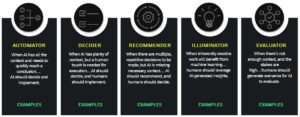Wprowadzenie Rozszerzonej Odpowiedzialności Producentów może zmniejszyć obciążenia poszczególnych gmin związane z całkowitymi kosztami zagospodarowania odpadów opakowaniowych. Według prognoz ekspertów firmy doradczej Deloitte nadal pozostaną one jednak bardzo wysokie. Tradycyjnie w trzeci weekend września odbędzie się akcja sprzątania świata – w Polsce po raz 28. Przy tej okazji warto poruszyć kwestie wprowadzenia gospodarki o obiegu zamkniętym i związane z tym wyzwania dla indywidualnych konsumentów, przedsiębiorstw oraz jednostek samorządu terytorialnego.
Badania własne przeprowadzone przez Deloitte pokazują, że pomimo nowych regulacji i powszechnego obowiązku sortowania śmieci, niemal dwie trzecie odpadów wciąż trafia do frakcji zmieszanej, którą trudniej, a więc i drożej jest przetworzyć. Według uśrednionych danych, na pozostałą 1/3 składają się przede wszystkim odpady surowcowe (papier, szkło, metale i tworzywa sztuczne, w tym opakowania), które są najczęściej występującym rodzajem odpadów w Polsce w 2020 r., i stanowią ok. 13 proc. ogółu śmieci. Następne w kolejności są bioodpady (9 proc.), a kolejne – odpady wielkogabarytowe (6 proc.). Poza selektywnie zbieranymi frakcjami, zmieszane odpady opakowaniowe nadal stanowią 5 proc. całej masy odpadów powstających w gospodarstwach domowych.
Te dane pokazują, że przed nami jest jeszcze wiele do zrobienia w obszarze gospodarowania odpadami, a droga do gospodarki o obiegu zamkniętym jest długa. Nadzieję na przyspieszenie tych zmian daje coraz większa świadomość konsumentów, którzy nie tylko w wymiarze jednostkowym dbają o segregację odpadów, ale domagają się tego od instytucji i organizacji. W efekcie firmy muszą większą uwagę poświęcić stworzeniu odpowiedzialnej i zrównoważonej strategii na przyszłość, a ten trend będzie się tylko nasilał – mówi Julia Patorska, Partner Associate, zespół ds. zrównoważonego rozwoju i analiz ekonomicznych, Deloitte.

Prywatne firmy w Polsce są gotowe do wdrażania rozwiązań w obszarze gospodarki o obiegu zamkniętym i widzą w tym modelu zarówno korzyści finansowe, jak i środowiskowe. Aby rozwiązania te były implementowane przez firmy potrzebne są w Polsce stabilne regulacje i strategie wspierające GOZ zgodnie z Europejskim Zielonym Ładem, jak również dostęp do korzystnego finansowania ze środków publicznych, w tym funduszy UE oraz środków prywatnych – mówi Dorota Zawadzka-Stępniak, dyrektorka departamentu energii i zmian klimatu, Konfederacji Lewiatan.
Koszty recyklingu opakowań nadal wysokie
Jak wynika z raportu “Szacunek kosztu netto selektywnej zbiórki, transportu i zagospodarowania selektywnie zbieranych odpadów opakowaniowych pochodzących z gospodarstw domowych”, przygotowanego przez firmę doradczą Deloitte dla Konfederacji Lewiatan, w latach 2021 – 2024 obciążenia związane z procesem zagospodarowania, czyli odebrania, transportu i przygotowania do recyklingu, poszczególnych frakcji odpadów opakowaniowych odbieranych z gospodarstw domowych będą sukcesywnie spadały, ale to przy założeniu, że mieszkańcy będą lepiej segregowali odpady, a producenci wdrożą efektywne działania z zakresu ekoprojektowania
Najwyższe koszty związane są z zagospodarowywaniem tworzyw sztucznych, metali i opakowań wielomateriałowych, czyli odpadów, które powinny być zbierane w żółtych pojemnikach. W zależności od typu gminy, recykling tony takich odpadów w 2021 r. będzie kosztował 2138 – 2379 zł, a do 2024 r. spadnie do 1817 – 2226 zł. W przypadku papieru i tektury (niebieski pojemnik) będzie to spadek z 817 – 980 zł w bieżącym roku do 694 – 931 zł za trzy lata. Szkło (zielony pojemnik) to koszt odpowiednio 604 – 645 zł i 504 – 594 zł.
Należy przy tym pamiętać, że w ostatnich latach stale wzrasta wolumen odpadów opakowaniowych, z którymi muszą radzić sobie gminy. W zeszłym roku średnio w pojedynczej gminie największy wolumen stanowiło szkło – prawie 260 ton, niemal dwukrotnie mniej w tonach zebrano tworzyw sztucznych, ale pojedyncze opakowanie jest zdecydowanie lżejsze – było to prawie 124 tony, a najmniej papieru – ponad 106 ton – mówi Joanna Leoniewska-Gogola, menedżer, zespół ds. zrównoważonego rozwoju, Deloitte.

Unijne regulacje czekają na wdrożenie w Polsce
Dużą motywacją dla firm do podejmowania niezbędnych działań w kierunku wdrożenia strategii cyrkularności w organizacji są kolejne regulacje Unii Europejskiej w zakresie gospodarki o obiegu zamkniętym. Na implementację w Polsce czeka Dyrektywa Plastikowa (Single-Use Plastics Directive). Zgodnie z jej zapisami zakazane będzie wprowadzanie na rynek jednorazowych produktów z plastiku (takich jak: sztućce, talerze, mieszadła, słomki, patyczki kosmetyczne, patyczki do balonów, pojemniki styropianowe do żywności), a także wprowadzona zostanie konieczność przytwierdzenia nakrętek lub wieczek do wszystkich pojemników na napoje (do 2024 r.). Co więcej, w 2025 r. opakowania wprowadzane na rynek będą musiały zawierać 25 proc., a w 2030 r. – 30 proc. materiału pochodzącego z recyklingu (tzw. rPET). Wreszcie, zbiórka opakowań przeznaczonych na napoje ma do 2025 r. wynieść 77 proc., a do 2029 r. – 90 proc.
Kolejną propozycją komisji Europejskiej jest Pakiet GOZ (Circular Economy Package), który zakłada, że do 2025 r. Polska musi odzyskiwać połowę tworzyw sztucznych zawartych w odpadach opakowaniowych, a do 2030 r. już 55 proc. Sugeruje się zamknięcie obiegu odpadów w gospodarce poprzez wprowadzenie opłaty opakowaniowej oraz systemu Rozszerzonej Odpowiedzialności Producenta.
Polskę czeka jeszcze konieczność uiszczenia podatku od plastiku (Plastic tax), czyli opłaty wnoszonej przez państwa członkowskie UE za nieprzetworzone odpady z plastiku w danym roku – 0,80 euro za każdy kilogram, od stycznia 2021r.
Na drodze do cyrkularności
W Polsce kształt regulacji krajowych w zakresie gospodarki o obiegu zamkniętym dopiero się tworzy. Przepisy lokalne nie są jeszcze sprecyzowane, ale dobrze znane są już oczekiwania i wytyczne Komisji Europejskiej. Otwarte pozostają pytania, kiedy i w jakim zakresie zostaną wdrożone lokalne akty prawne, a nie, czy zostaną wdrożone. Warto już teraz poszukać informacji i odpowiednich narzędzi, które pozwolą przygotować organizację na te zmiany.
– Dostosowanie działalności do nowego modelu gospodarki o obiegu zamkniętym wiąże się z reorganizacją aktywności wszystkich podmiotów funkcjonujących w łańcuchu wartości przedsiębiorstwa. Strategia cyrkularności obejmuje nie tylko zmiany na poziomie jednostkowych opakowań, ale odnosi się także do innych obszarów takich jak: logistyka, recykling czy edukacja konsumentów – zgodnie z zasadą 5R: Reduce, Recycle, Reuse, Redesign, Rework” – zaznacza Julia Patorska.
O raporcie
Raport został sporządzony przez zespół doradców Deloitte dla członków Konfederacji Lewiatan reprezentujących podmioty na różnych etapach łańcucha wartości gospodarki odpadami, w tym podmioty będące producentami opakowań, wprowadzające produkty w opakowaniach na rynek, odbierające i zagospodarowujące odpady, poddające opakowania procesom recyklingu oraz przedstawicieli organizacji odzysku opakowań.


